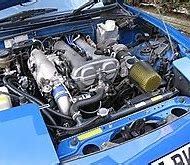The term “n/a engine” is a shorthand for “naturally aspirated engine.” It’s a type of internal combustion engine that doesn’t use forced induction, meaning it relies solely on atmospheric pressure to draw air into the cylinders for combustion. This contrasts with turbocharged and supercharged engines, which use mechanical devices to compress air before it enters the cylinders, resulting in increased power and torque.
How Naturally Aspirated Engines Work
In a naturally aspirated engine, the intake stroke of the piston creates a vacuum that draws in air from the atmosphere. This air mixes with fuel, and the resulting mixture is ignited in the combustion chamber, generating power. The amount of air that can be drawn into the cylinders is limited by the atmospheric pressure, which is why naturally aspirated engines generally produce less power and torque than their forced-induction counterparts.
Advantages of Naturally Aspirated Engines
Simplicity: Naturally aspirated engines have a simpler design than forced-induction engines, which makes them more reliable and less expensive to maintain.
Smoothness: They tend to have a smoother power delivery, with a linear increase in power as the engine revs higher.
Longevity: Without the added stress of forced induction, naturally aspirated engines can often last longer than turbocharged or supercharged engines.
Fuel Efficiency: In some cases, naturally aspirated engines can be more fuel-efficient than forced-induction engines, especially at lower engine speeds.
Disadvantages of Naturally Aspirated Engines
Lower Power and Torque: As mentioned earlier, naturally aspirated engines produce less power and torque than forced-induction engines.
Less Responsive: They can be less responsive, especially at lower engine speeds, due to the lack of forced induction.
Lower Peak Power: The peak power of a naturally aspirated engine is often reached at higher engine speeds compared to forced-induction engines.
The Decline of Naturally Aspirated Engines
In recent years, there has been a trend towards forced-induction engines in the automotive industry. This is due to several factors:
Emissions Regulations: Stricter emissions regulations have made it more difficult to meet standards with naturally aspirated engines. Forced-induction engines can be more easily tuned to meet these regulations.
Consumer Demand for Performance: Consumers are increasingly demanding more power and performance from their vehicles. Forced-induction engines can deliver this without significantly increasing engine displacement.
Technological Advancements: Advances in turbocharger and supercharger technology have made these systems more efficient and reliable.
However, naturally aspirated engines are not completely obsolete. They still have a place in the market, particularly in smaller, less powerful cars and in certain niche applications, such as sports cars that prioritize driving experience and engine sound over raw power.
The Future of Naturally Aspirated Engines
While the future of naturally aspirated engines may seem uncertain, there are still reasons to believe that they will continue to have a role in the automotive industry. Some automakers are exploring ways to improve the performance and efficiency of naturally aspirated engines through advanced technologies such as variable valve timing and direct injection. Additionally, the rise of electric vehicles could lead to a resurgence in naturally aspirated engines, as they may be seen as a more affordable and environmentally friendly alternative to forced-induction engines.
The Enduring Appeal of Naturally Aspirated Engines
While the automotive industry has increasingly embraced forced induction technologies like turbocharging and supercharging, naturally aspirated engines (NA engines) continue to hold a special place in the hearts of many enthusiasts. These engines, which rely solely on atmospheric pressure to draw air into the cylinders, offer a unique driving experience that many find irreplaceable.
The Essence of a Pure Driving Experience
One of the primary reasons for the enduring appeal of NA engines is the pure driving experience they provide. The linear power delivery, smooth throttle response, and harmonious engine note create a connection between the driver and the machine that is often lost in forced-induction vehicles. NA engines reward those who understand the nuances of engine speed and gear selection, offering a sense of engagement and involvement that is difficult to replicate.
The Symphony of Sound
A significant part of the NA engine’s appeal lies in its distinctive sound. The high-revving nature of these engines often produces a melodious symphony that can be both exhilarating and soothing. The absence of turbocharger whine or supercharger whine allows the pure mechanical symphony of the engine to take center stage.
Reliability and Longevity
NA engines, being inherently simpler in design, are often more reliable and durable than their forced-induction counterparts. The absence of complex turbocharger or supercharger systems reduces the potential for mechanical failures and simplifies maintenance.
Fuel Efficiency in the Right Hands
While forced-induction engines often offer impressive fuel economy figures under specific driving conditions, NA engines can be surprisingly efficient when driven with a light foot. By avoiding excessive throttle inputs and unnecessary high-rpm driving, it’s possible to extract excellent fuel economy from an NA engine.
A Niche Market, But a Loyal Following
While NA engines may not be as mainstream as their forced-induction counterparts, they still command a dedicated following. Enthusiasts appreciate the raw, unfiltered power delivery, the linear throttle response, and the unique character of these engines.
FAQs
What is an N/A engine?
An N/A engine, short for naturally aspirated engine, is an internal combustion engine that relies solely on atmospheric pressure to draw air into the cylinders for combustion. It doesn’t use forced induction systems like turbochargers or superchargers.
How does an N/A engine work?
In an N/A engine, the piston’s downward motion during the intake stroke creates a vacuum, drawing in air and fuel mixture into the cylinder. Power is then generated by compressing and igniting this mixture.
In conclusion, naturally aspirated engines have a long and storied history in the automotive industry. While they may not be as powerful or efficient as forced-induction engines, they still offer a unique driving experience that many enthusiasts appreciate. As the automotive industry continues to evolve, it remains to be seen whether naturally aspirated engines will continue to have a place in the future.
To read more, click here.

Leave a Reply